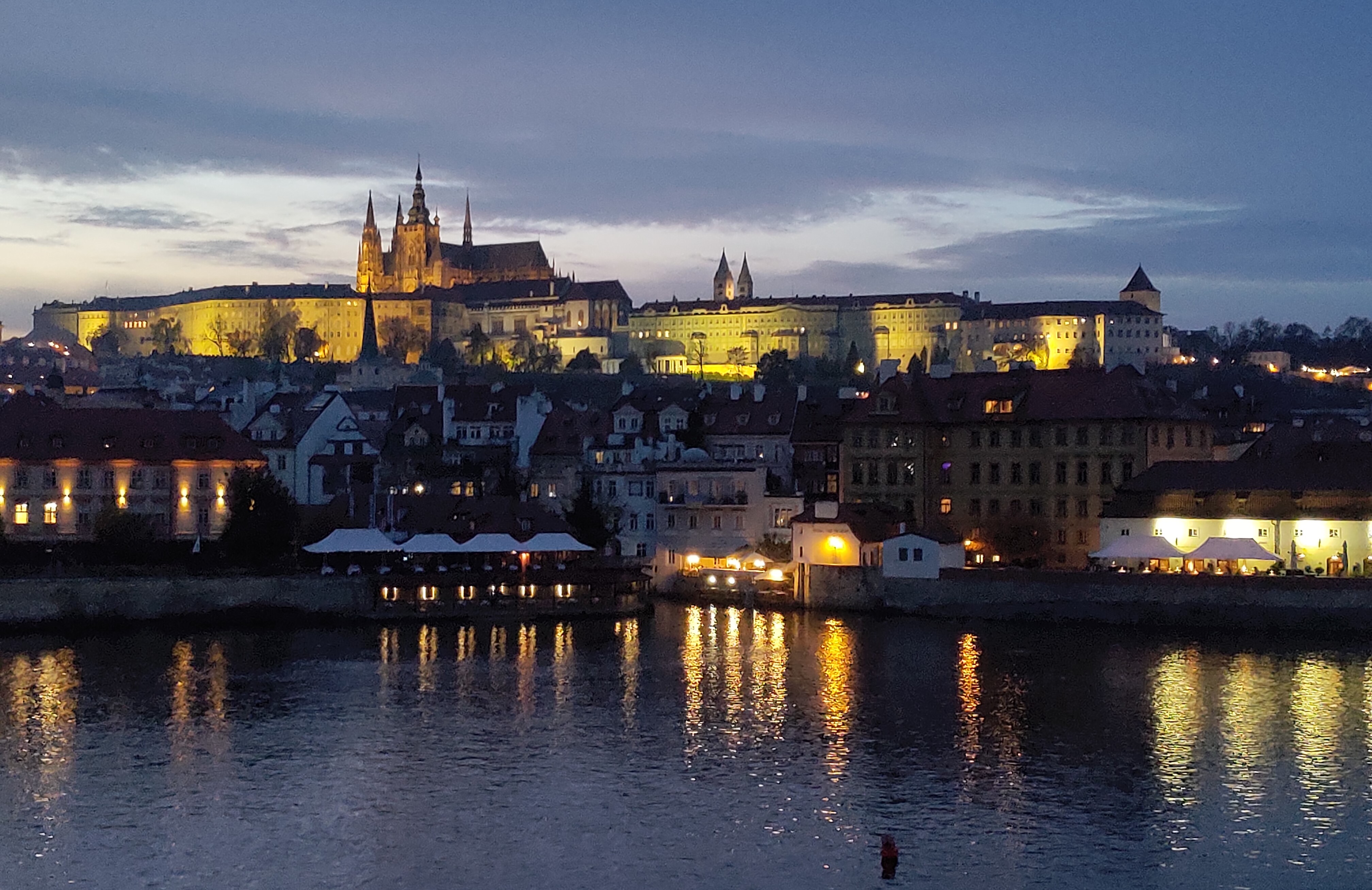Central Europe 2022 - Bratislava - Prague
Bratislava

On the 29th of October I left Budapest for the Slovakian capital, Bratislava. The first segment of my ride, numbered EuroCity 142, also named “Liszt Ferenc”, ran from Budapest to Wien. It was named after the Hungarian composer Liszt Ferenc (Franz Liszt), whose piano was among the most precious collections of the national museum of Hungary (it was said to be previously used by Beethoven, and was kept in a special room with carefully adjusted temperature and humidity). The train ride was not long, but I transferred at the tiny border town of Hegyeshalom. It was a very small town, with no business whatsoever near the train station. Judging from the map at the station, there was one main street for the town, where you could find some shops like pharmacy, restaurant, etc. The waiting area was in the same room with the ticket office, and consisted of just two benches. It reminded me of some small county train stations in China, but probably back to twenty years ago. My second ride from Hegyeshalom to Bratislava featured a very small train carriage, one that was even shorter than some trams in Zürich.
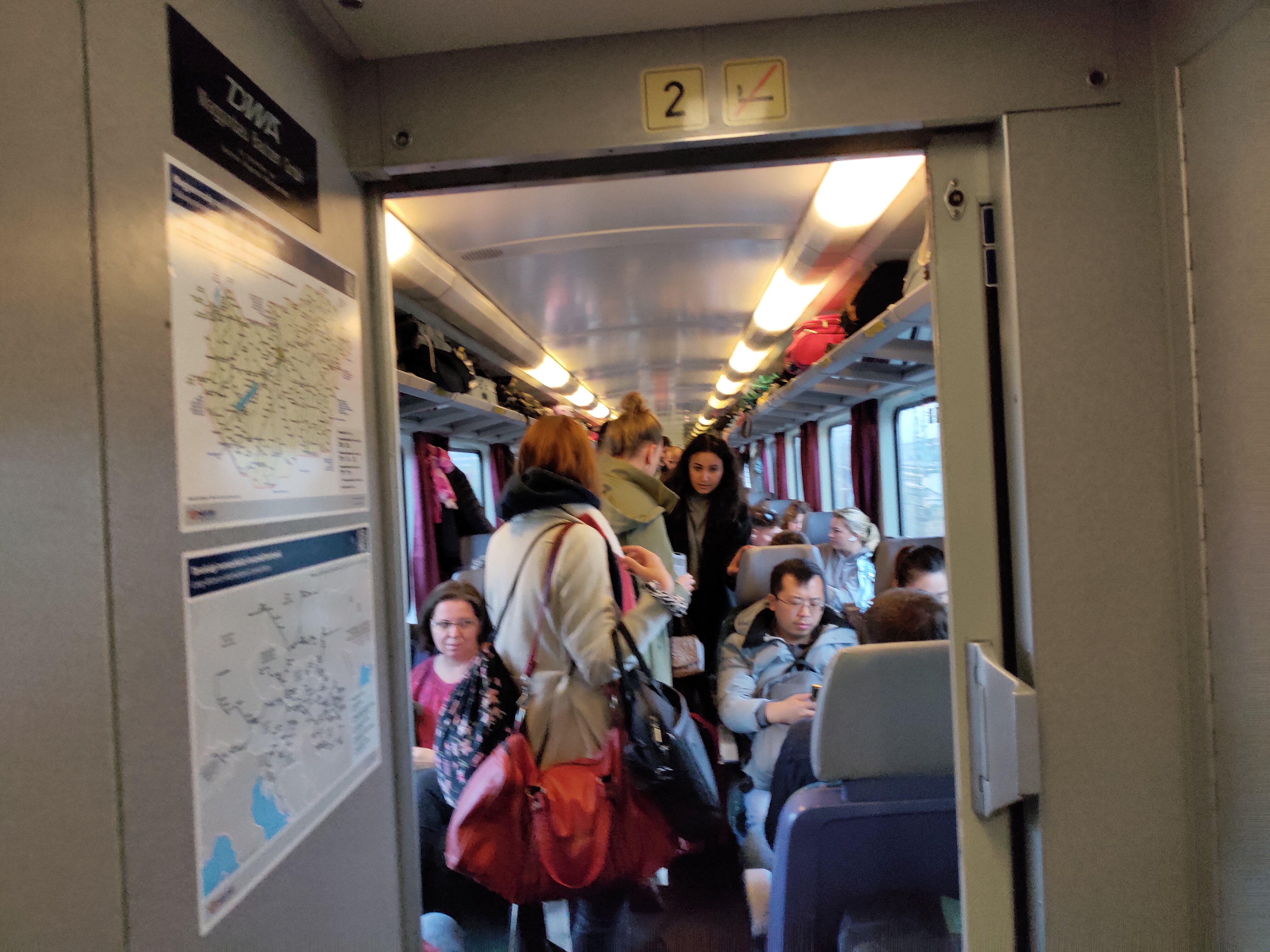
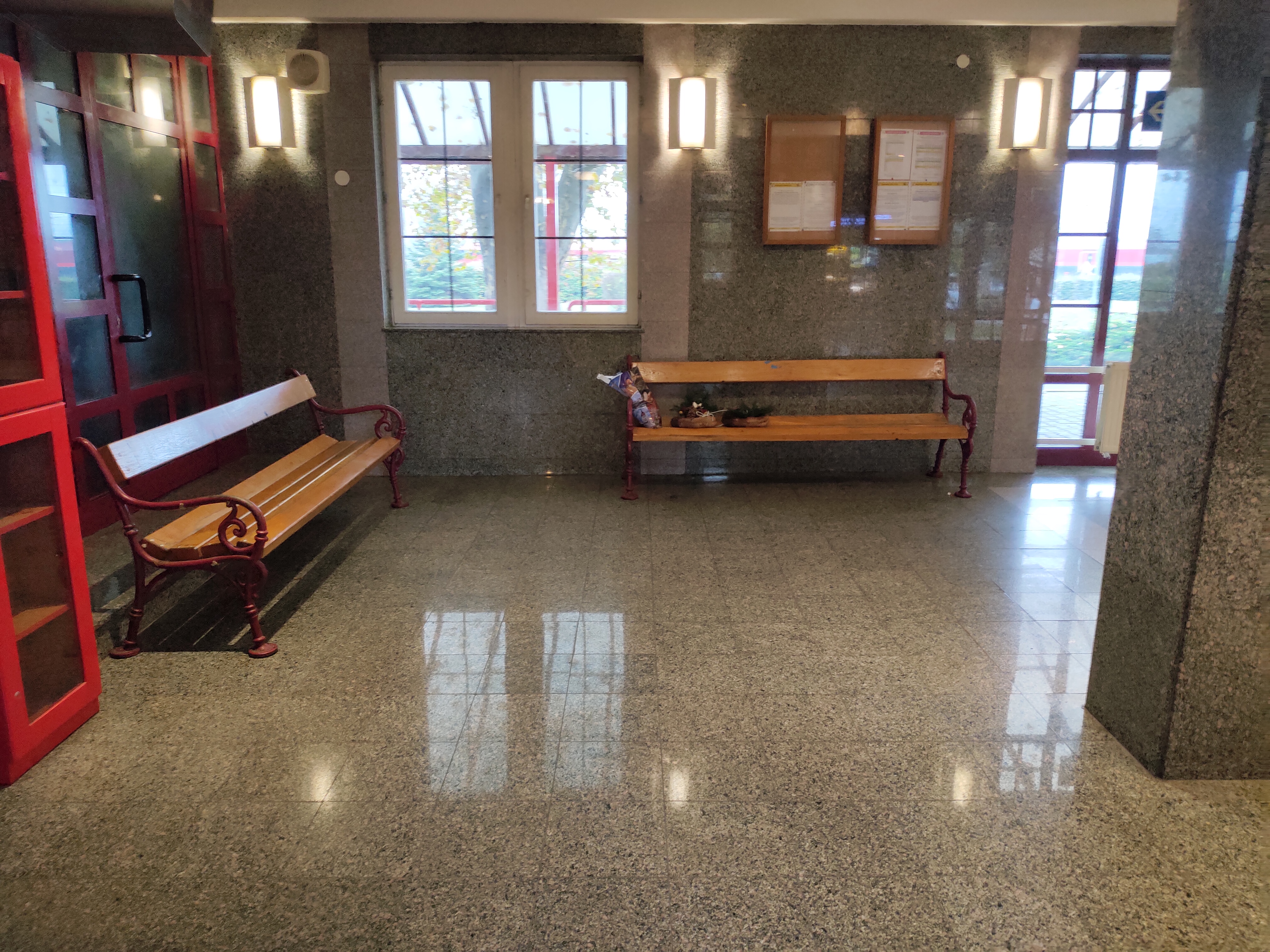
The fog that had shadowed Budapest apparently followed Danube to Bratislava. The I-cannot-see-across-the-Danube situation continued and worsened. When on the second day I ascended to the top of the castle hill, trying to get a glimpse of the river view, the most prominent view I could see was the construction site right at the foot of the hill. The bridge, together with the cars and the buildings on the other side of the Danube, was covered in thick fog. As I wandered along the Danube, I saw warnings for low visibility displayed on an electronic screen. According to the displayed map, the warning was almost nation wide. As a result, my stay in Bratislava was shadowed by the foggy, humid coldness, not the ideal weather for a person who just recovered from fever and cold. I changed to warmer clothes during my stay, but still constantly felt cold outdoors.
Fortunately, I had several delicious and heart-warming meals here. As I reached Bratislava, I could sense that the consumer price was no longer as low as that in Budapest or Ljubljana. However, with 10 euros one could still have a very decent meal. The first evening in Bratislava, I had a good bowl of chicken soup Ramen with a bottle of sparkling Rooibata (“Lemonade,” the lady at the restaurant explained, but this was quite different). The small Japanese restaurant was located on the main street near my hostel, and was also popular for its sushi, judging from the takeaway orders they were distributing. On the second day I had a hearty meal of burger and fries for lunch. The burger had thick juicy beef, a greasy slice of bacon, and was filled with the melted cheddar. The french fries came with a chili ketchup sauce, which added a different flavor. In the evening I tried to look for some local cuisine, and after seeing the people waiting for tables in Slovak Pub, I went to a local restaurant called Gladius. The restaurant had a quiet and private ambience, and the food was of reasonable price and good quality. I spent less than 6 euros on a creamy garlic soup and a beer. The beer was surprisingly light and fresh, and the soup, although slightly salty to my taste, was still very tasty.
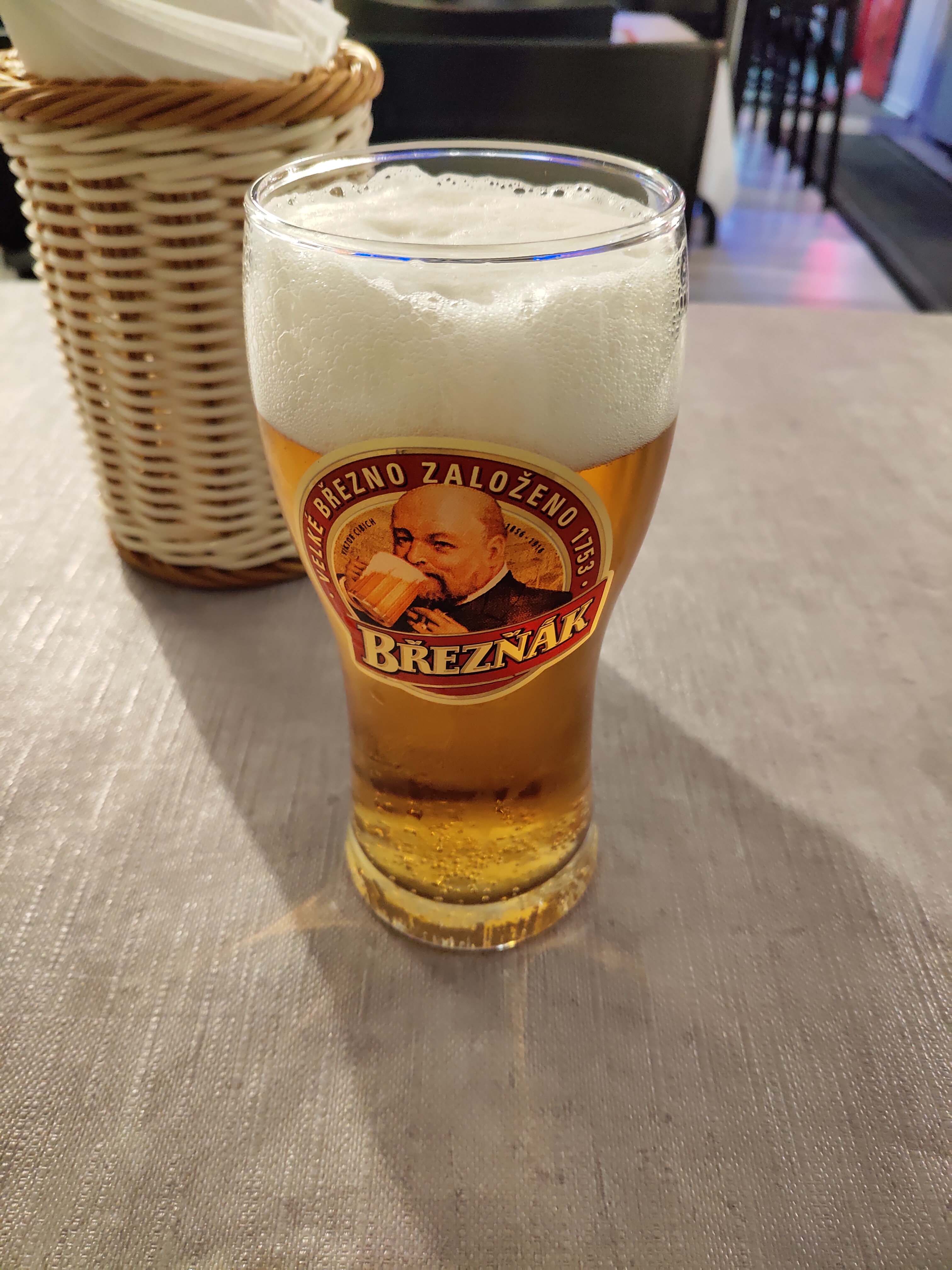
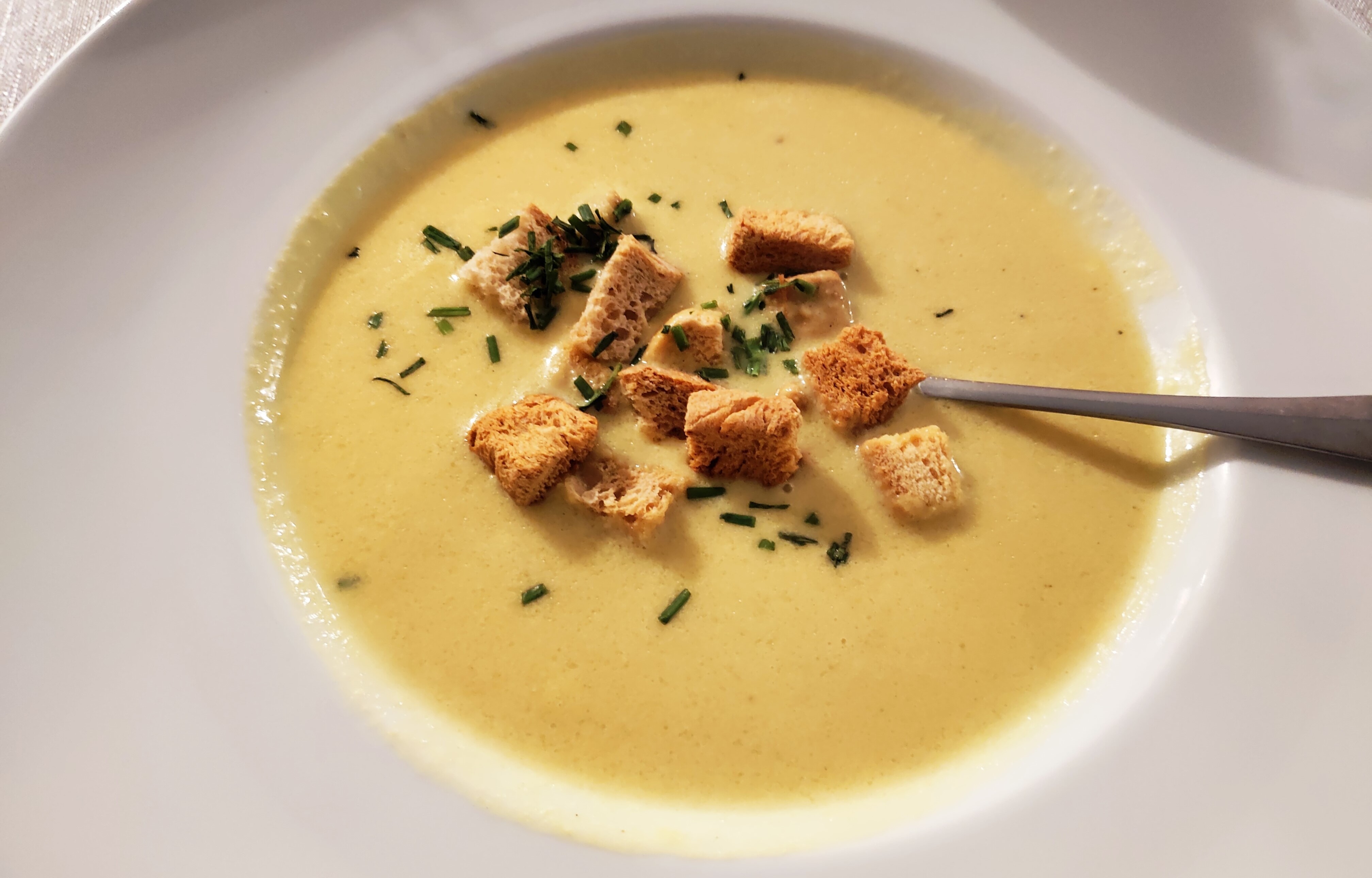
The entire central-eastern Europe has a quite strong Catholic ambience. Except for the grand cathedrals in Budapest and Prague, most churches were still mostly reserved for religious purposes rather than for tourism. In Ljubljana, for instance, I saw an aged couple went for confession one after another. As my first day in Bratislava was Sunday, I was able to witness several holy mass. In the morning I was at St. Stefan church, and the holy mass was accompanied by choir music. There was a homeless person outside the church door, singing along the music. Around noon I was at St. Martin’s cathedral, and there was again a holy mass (in fact, according to the schedule, there were multiple ones in the morning, at noon, and in the afternoon). There were more tourists as St. Martin’s cathedral was located near the old town, and I was able to enter briefly with other tourists a bit inside the entrance to get a glimpse. People were following one another in a queue in front of the altar. After the ritual, they went back to their seats to pray. Some people, including some young people, actually kneeled on the ground when praying.
The old town of Bratislava, the major attraction within the city, is of the similar size as Ljubljana. Both old towns are also accompanied by a castle, located on an adjacent hill. As both places had Slavic languages as their first language, the two cities had similar vibes, although Ljubljana seemed to be cleaner and tidier. Tired of visiting museums, I only walked through the old town, and looked at the outside of the castle, the national museum and the national gallery. The gate to the old town, Michael’s gate, was under restoration, and was again covered by scaffolds. There was also a large area of construction site at the foot of the castle hill, and significantly deteriorates the view of the watchpoint outside the castle. Meanwhile, I spent slightly more time indoors, and had a chat with my Welsh roommate Gavin, whose name was derived from the knight of the round table, Gawain. Having lived in Liverpool for many years, he was very fond of the city and highly recommended me to visit. Manchester is also good, but Liverpool is better, he said. No, not because of the football team, just the city.
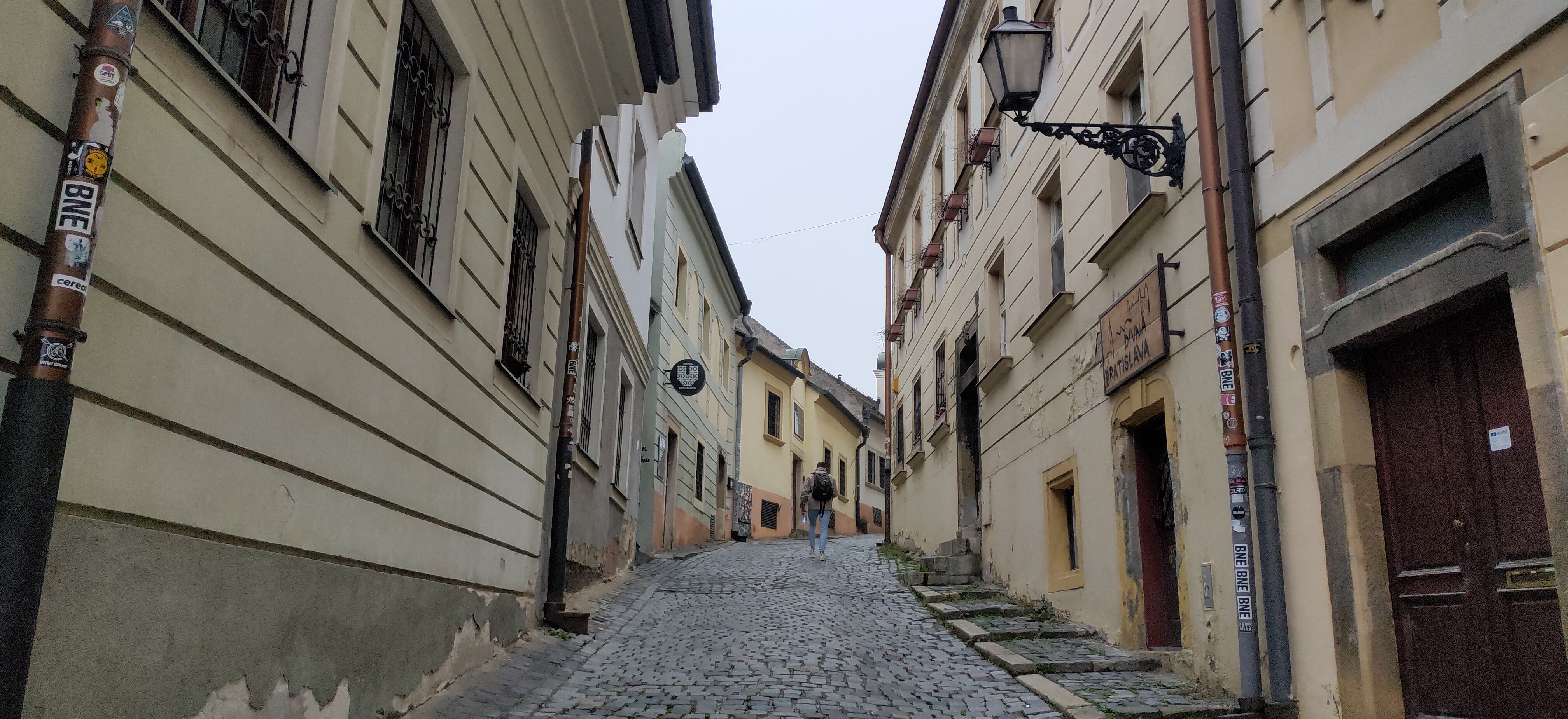
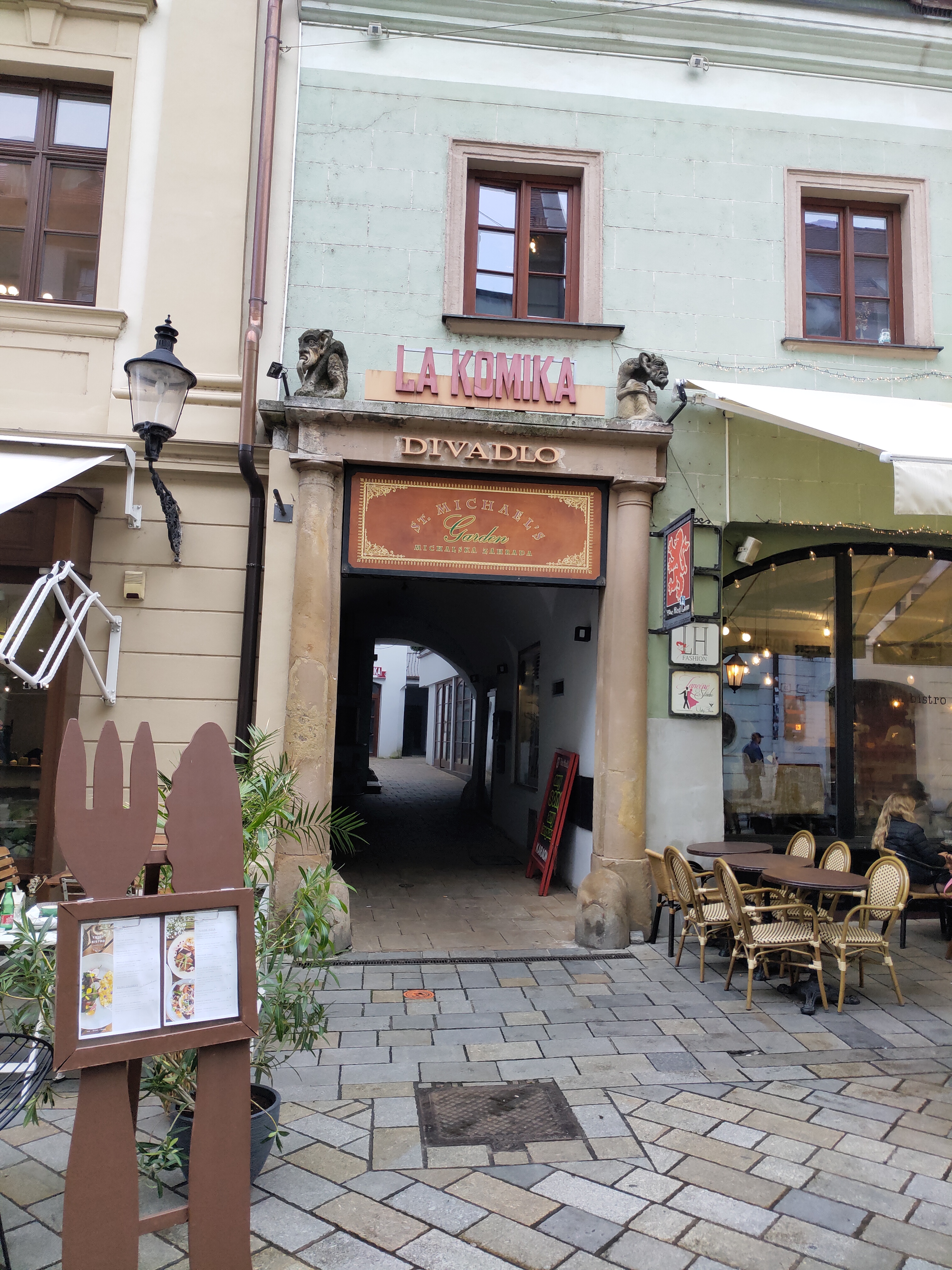
Prague

I was awoken from my sleep by twinkling lights dancing before my eyelids. It was forty minutes since the train left Brno and headed northwest for Prague, and the thick mist that had haunted the central European mountains and plains, as well as my journey in Budapest and Bratislava for the past four days, was finally lifted. Now the sunlight shone unhampered through a clear atmosphere; and by clear I mean the clear blue sky that is so typical of a Beijing autumn day, extending to the farthest visible depth. It is in this clear weather that one gets to appreciate the true diversity of the magnificent sunlight. The olive green from the corniferous, the twinkling gold and flaming red from the trees, and the highlights that are reflected from prancing waves and swirling eddies of the running streams. All these colours that had been diminished in the darkenss of the mist now vividly came together, as if a world brought back to life.
As I arrived at Praha main station and was walking in the underground tunnel, my eyes were caught by the sunlight shining down through a small opening. Looking up, I saw a magnificent train hall above the tunnel, lightened by sunlight shining through splendid windows, almost as in a Catholic church. The train station was then connected to a lovely central park, where people were walking their dogs, eating snacks or reading a book. One couldn’t see this beautiful scene on a golden autumn afternoon without feeling touched. Thus began my stay in my favorite city along my journey.
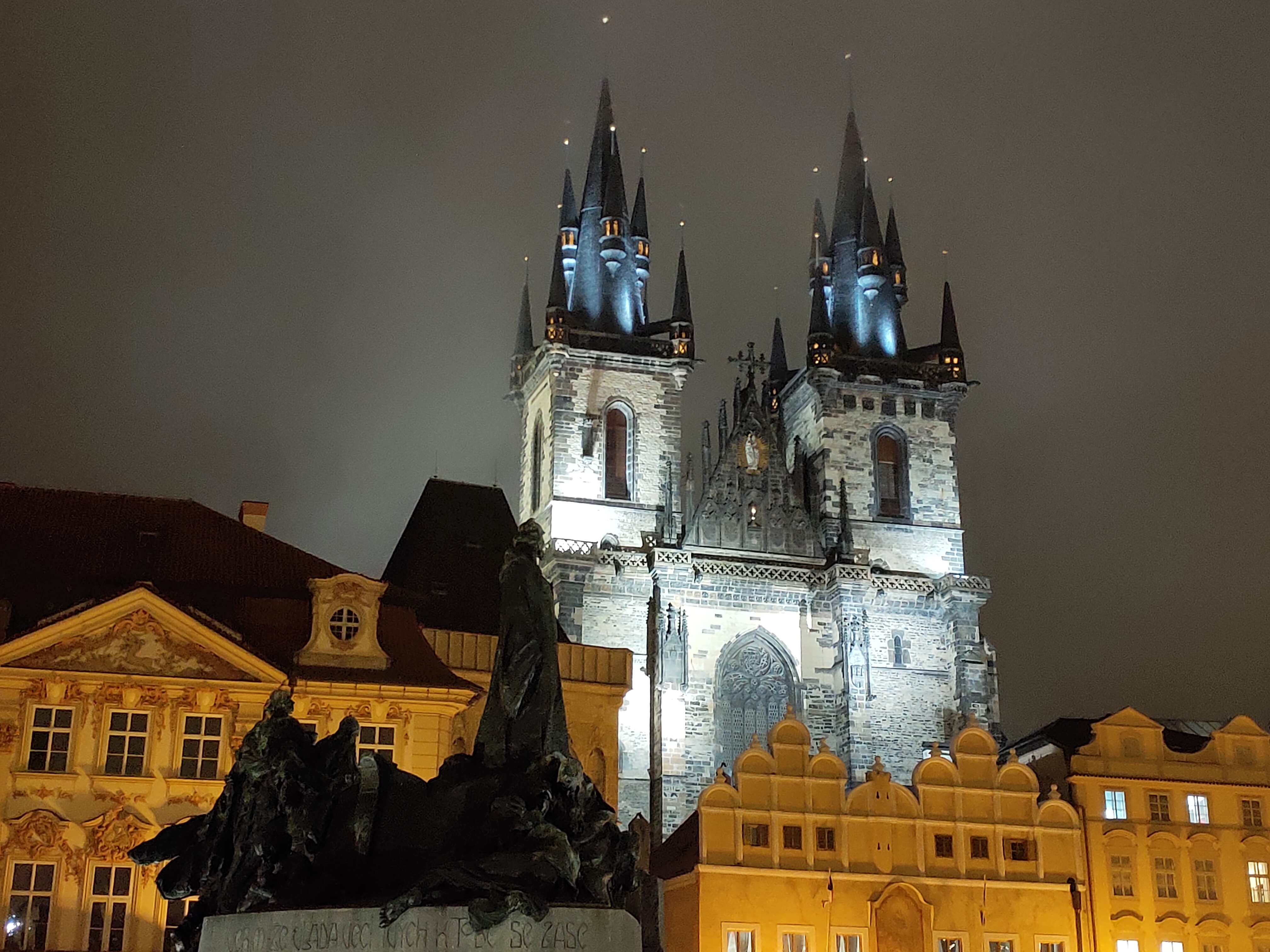


Prague first struck me as a city with numerous medieval, renaissance and baroque bearings. As one walks through the old town, the restored Medieval style gate towers, and the grand Staromestske Namesti (old town square), the Universita Karlova (Charles University), and the Charles bridge, all remind people of Prague’s once prominent role in the Luxembourg, as well as the later Habsburg Holy Roman Empire, and its status as the seat of the empire during Charles IV’s reign. The plaques of Universita Karlova on the wall, and the sculptures on the Charles bridge, although might not be the original, take visitors back to more than six centuries ago. The Vltava, which transverses most of Bohemia before coming to Prague, is cleaner, although smaller, than the Danube, and paints a more delicate ambience on the old town of Prague, as compared to Budapest and Bratislava. I stood on the bridge and looked northwards, imagining the Vltava merging into the Elbe in the far north, flowing past Berlin, my final destination, into the Baltic sea. A few days later I would stand on the bank of the Elbe, in front of a remnant segment of the Berlin Wall. It is indeed fascinating how the flowing water always arouses a strong sense of connection, something that not a road, not even a railway, can achieve.
Across the Vltava from the old town lies another major attraction, and one of my favorite attractions, the Prague castle. Despite its name, the so-called Prague castle is different from the other castles I have visited. Those castles either served as a fort/Medieval style residence of a feudal lord (Heidelberg, Ljubljana, Bratislava), or as a renaissance-Baroque palace of the Holy Roman Empire noblemen (Buda). The Prague castle, however, is much richer than that. There is the usual royal palace, which has been the residence of the Bohemian throne from Medieval to modern ages, and was home to at least two emperors, Charles IV and Rudolph II, and which, over the years, acquired a hybrid Gothic-Renaissance style. The office chamber of the palace witnessed the famous 1618 defenestration. As the Catholic lords and their secretary were thrown out of the tower window by the Protestant lords, a long-time unrest, later known as the Thirty Years’ War, which influenced the entire continental Europe, came into form. The palace is accompanied by two churches. St George’s Basilica, a Romanesque church, features a red facade and simple towers. St. Vitus Cathedral, on the other hand, is a Gothic style church, that is magnificent not only in its grand magnitude, but also in its stained glass decorations. For a person that was on his first trip to central and eastern Europe, these stained glasses were the most beautiful ones I had ever witnessed. In addition to these architectures, the Prague castle also comes with a narrow lane between the defensive wall and the palace-cathedral assembly, known as the Golden Lane. While the palace and the churches were indeed magnificent and served to awe, the Golden Lane was much more interesting and fun. Through this narrow lane, one could see the ordinary life of the miscellaneous people attached to the castle during the feudal ages. Guards, soldiers, goldsmiths, servants; their lives were vividly presented through the reconstruction of the living spaces, arsenal, defensive walls and narrow corridors in the towers, as well as the pub/restaurant where these people used to blow off steam. The golden lane was also close to two towers, which used to serve as prisons. The vivid reconstruction of the torture rooms and punishments, although frightening and uneasy to look at, provided an interesting perspective of the feudal ages. Surprisingly, the Golden lane maintained part of its functions and was home to a number of residents up until the dawn of WWI; here one could see the transition from the feudal age to the modern age, or the emergence of a modern nationalism republic from the old empire.
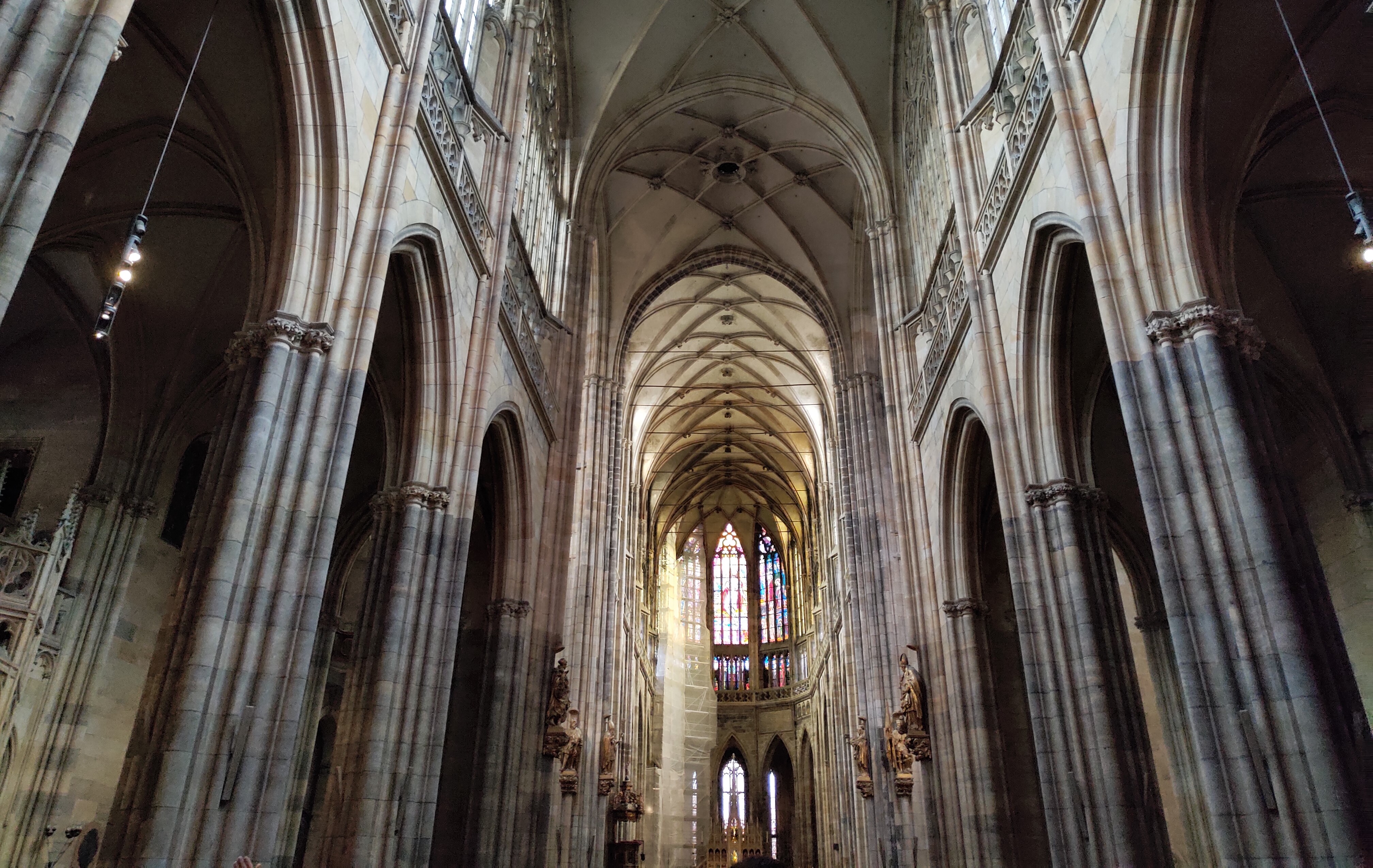
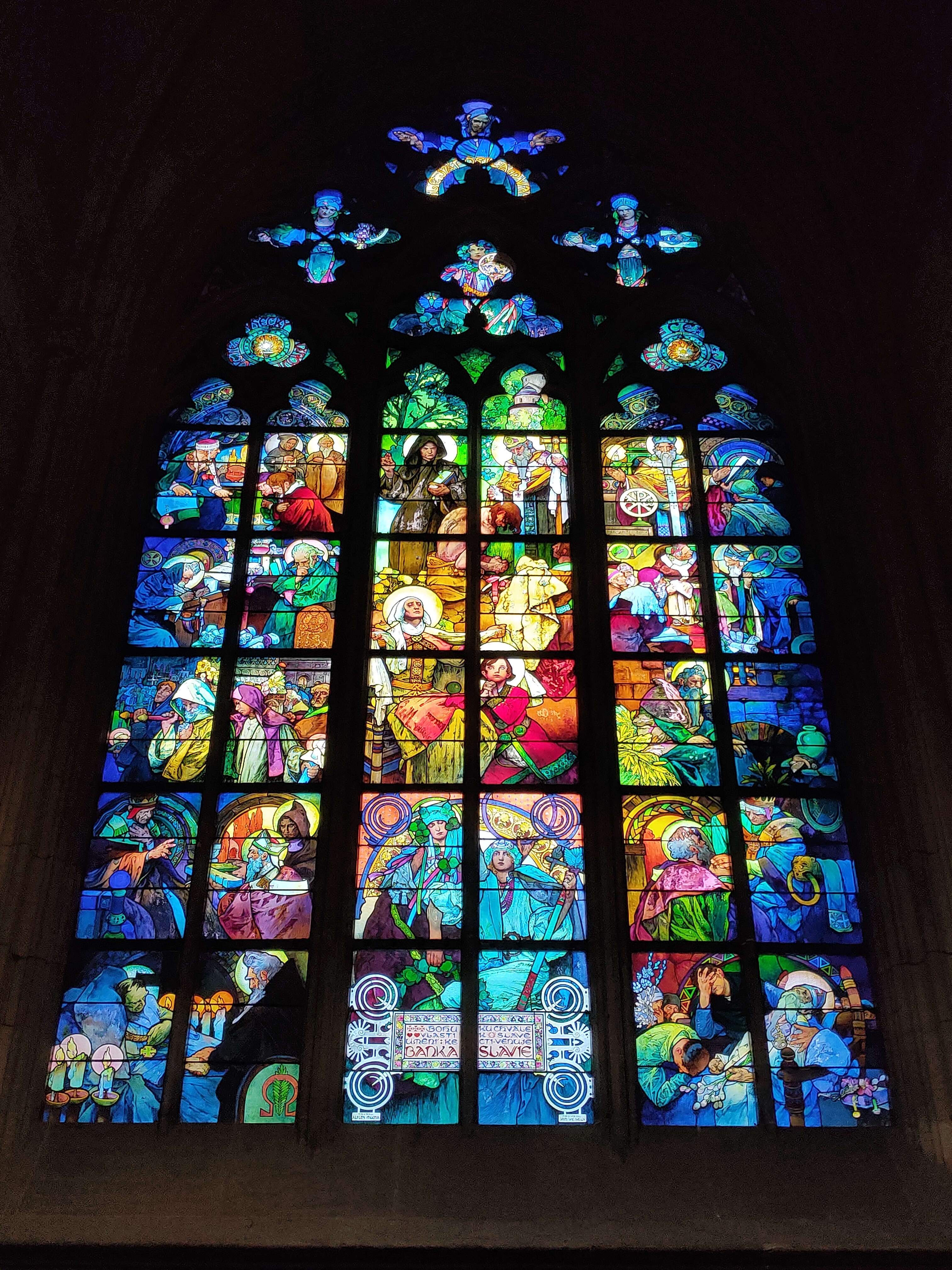
Prague continued to be a major cultural city in the early modern times, and the city seemed to be not sparing efforts in demonstrating this. You might bump into a modernist sculpture of Kafka (or in my case, a post-modernist giant rotating head of Kafka) around the corner, reminding you that although having composed his works in German, Franz Kafka was by nature a Bohemian writer. In the busy old town area you would find a museum of Alphonse Mucha, a popular illustrator artist of Art Nouveau, whose work on stained glasses was quietly sitting in St. Vitus Cathedral, reminding you that although having made his name in Paris, Mucha was a very nationalist person at heart. Perhaps more so were his twenty epic cycle paintings, named the Slavic Epic, but unfortunately these paintings were on exhibition in Moravia, and couldn’t be viewed in Prague. Finally, if one would go a bit further south in Praha 2, one would see the museum of Antonin Dvorak. The museum, originally Dvorak’s house, was a very small building. On the ground floor one got a glimpse of his lifetime and experiences, and on the first floor one got to dive deeper into his achievements. Given its size the curating was quite extraordinary. Not only are you able to look at the collections, including many of his private belongings, but also watch an excellent documentary outlining his life as a Bohemian national musician, and listen to all his compositions. Drawing inspirations from Bohemian and Moravian folk music, he gained international recognition and fame, and was also invited to the Unite States to help compose new music for the new founded land. Prior to my visit there, my deepest impression of him was his grand symphony “From the New World”; but after my visit, I was also deeply impressed by the fierce and passionate “Slavonic Dance”, and the pure lyric melody “Humoresque”. His music is never overly serious, dull or boring, but is always romantic as well as passionate. This most celebrated Czech musician and composer was, from every aspect, a representative of Czechian nationalist music, as I realized later that the first six notes of his popular Humoresque were used as the cue tone for broadcasting on Czech trains.
As a keen explorer on foot, I also walked down streets and lanes of Praha 2, 3, 8 and 10, during which I acquired the impression that Prague was not only touristic, but also an amazing city to work and live. Apart from all the rich history and culture that attracts (for some, too many) tourists, Prague is also home to numerous interesting little shops, second-hand shops, restaurants, bistros, osterias, tapas bar / izakayas and pubs. On many streets one might see the boards showing Pilsner Urquell, a lager beer that the Czechs were most proud of. Unfortunately, having tried out beers in Ljubljana and Bratislava, I was no longer in the mood for these drinks, and had to reserve this famous Lager until my next visit. It came as a surprise that Prague had a significant Asian community, most notably the Vietnamese community. There were many so-called mini markets, which were virtually convenience stores, often just hundreds of meters or less from one another. These stores were frequently, almost always, run by east Asian descendents. Apart from that, modern or traditional Vietnamese restaurants could be seen all over the town area, the densest I had ever seen during my trip in central Europe. I had a hearty bowl of Pho Bo in one restaurant to the south of the center, and it tasted quite authentic, at least quite close to the rice noodle with soup in Guangxi. The friendly owner also offered a separate dish of sliced peperoni, which could be added to the Pho, and it was quite spicy.
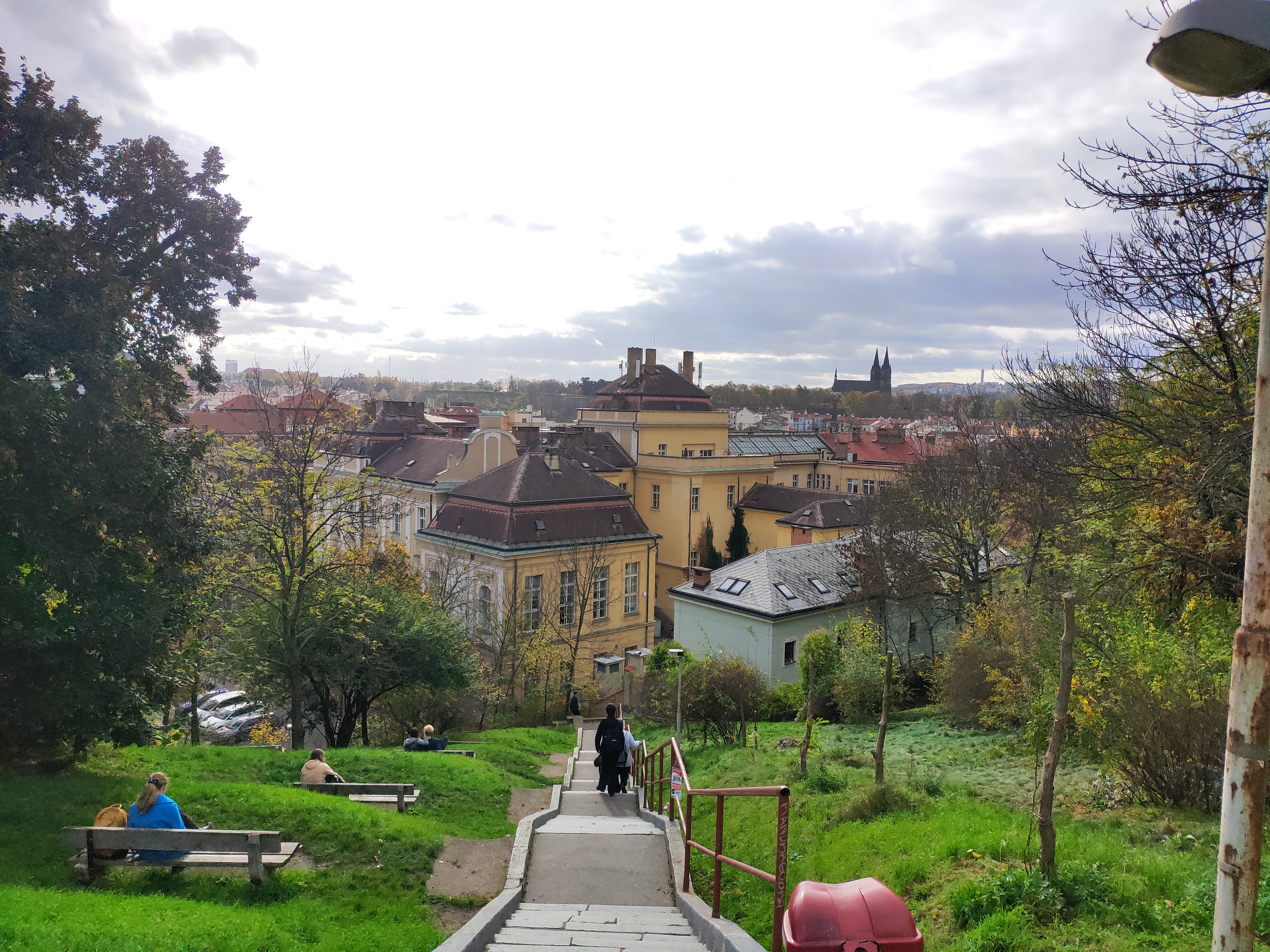
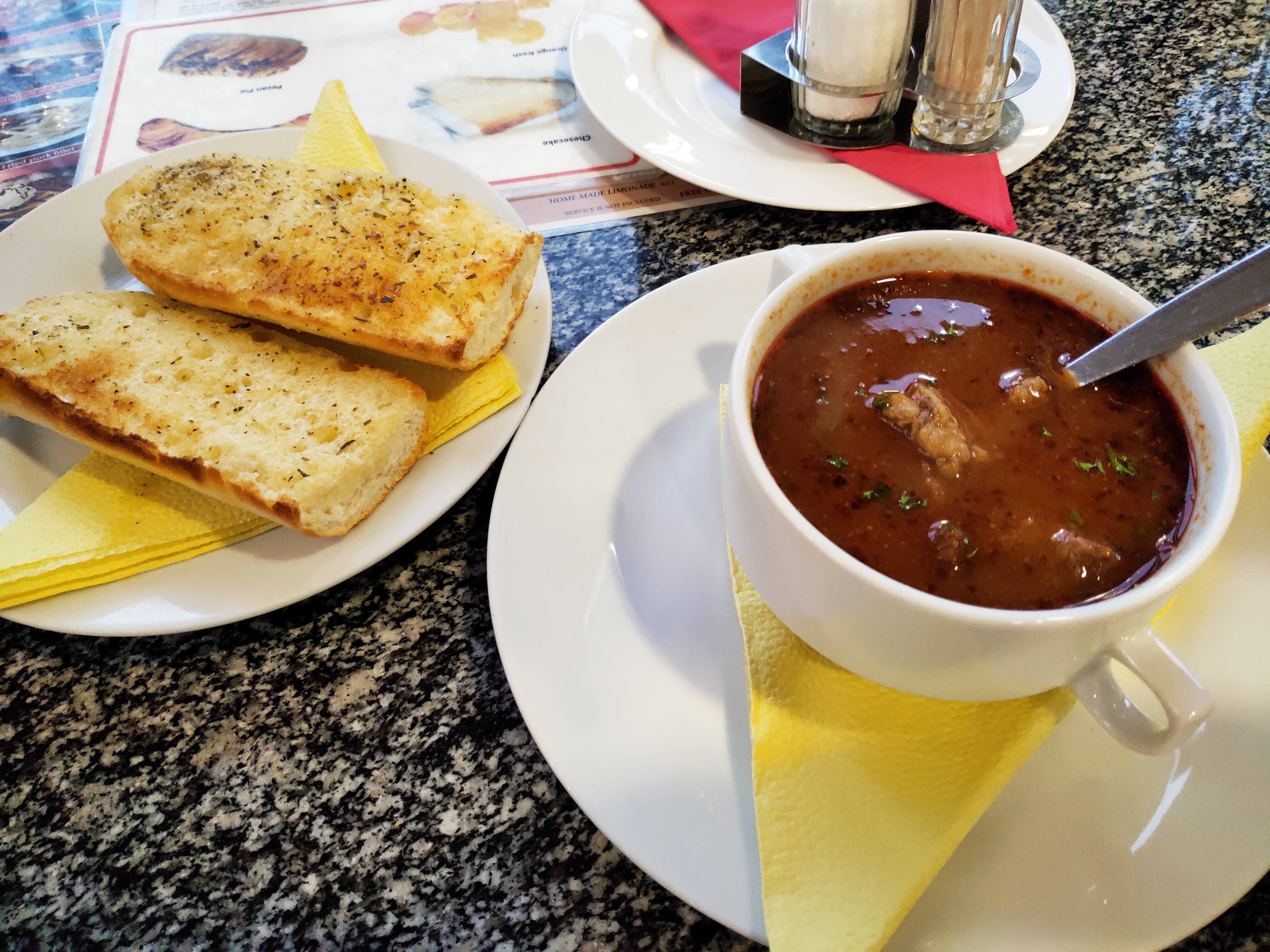

The habitability of Prague certainly attracted plenty of businesses and workers to settle here. An example of such was my encounter of Giuseppe, another highlight of my journey, whom I met in the hostel lounge. The first evening we met, he was using his laptop in the lounge, while I was reading a novel in the sofa. We stroke up a conversation, and it turned out, we were both following a UCL game that night, i.e. Liverpool against Napoli. Being an Italian, he naturally rooted for Napoli, which was not only 15 games unbeaten in the Italian League, but also humiliated Liverpool with a 4-1 win a month back. I, on the other hand, rooted for the troubled Liverpool, who was hanging around the 10th place in the Premiere League. Although we were unable to find a live streaming anywhere, our small conversation led to long talks spanning two evenings. Giuseppe was from Milano; he used to work in banking, and after some unsuccessful and prolonged interviews with UBS last year, he took up a position in ExxonMobil and switched to the energy industry. He was just coming to Prague for his new post, and had been looking for an apartment for several days. He was excited after finding out about my expertise as a geophysicist, and we talked about the rising electricity prices, energy crisis, and different means of renewable energies as replacements. He asked about the induced seismicity during hydraulic fracturing in shale gas exploration, and I told him that the supposedly clean high-enthalpy geothermal energy may induce similar seismicity. Later we talked about each other’s itineraries, and he strongly recommended the Way of St. James as an intense hiking trail. Time flew, and when we ended our chat, it was already over midnight. “You wouldn’t expect such a conversation at a hostel,” said he, tired but satisfied after the long talk, “but again, that is why we came to the hostel, right?”
In addition to Giuseppe, I had another two interesting encounters at the hostel. The first evening I met an elderly man from Germany, who was almost asleep when I got back to my hostel. He was from near Leipzig, and upon hearing that I spoke a bit German, however, he got excited and told me about his great vacation in Turkey. For almost an hour he was shooting a train of German at me, and as a mere A-level learner, I struggled to keep up with his words and strived to understand the main idea by catching discrete words or sentences from his speech. You can go from Germany to Sofia, and then to Istanbul, and than to the Turkish beach, he said. For about twenty minutes, he complained how services, foods, and taxis were expensive in Germany, but so cheap and approachable in Turkey. “The hotel was really nice at the beach; breakfast, lunch, dinner, all included. At noon they have beef, Schnitzels, everything. Guess how much that cost?” He waved his hands at me, his eyes opened wide, waiting for his dramatic reveal. “Just 30 euros a day!” He went on to show me his leather jacket and straw hat that he bought as bargains in Turkey, both of which much cheaper than what you would expect in Germany. He was truly happy as a young boy. Where was I from, he asked. I was from China, but since two years I lived in Switzerland. Ah so, he exclaimed, die Schweiz! He really liked to use “ah so”. Der Strom auch teuer in der Schweiz? Nein, nein, I answered, ein bisschen teurer, aber das ist noch ok. He shook his head, das ist sehr teuer in Deutschland! He gestured a really high price with his hands separated wide apart. For some reason he reminded me of one dormitory manager in my high school. They both had white hair, were both short and lively, as well as friendly.
On the same evening I met Hana, a girl from Moravia coming to Prague to enjoy her Halloween in the city. She dressed up as a really cool ghost bride, after using a lot of makeups. The next morning I was able to talk to her more over the hostel breakfast. “I have twenty-six different food allergies,” she said, sadly but proudly, “so I also have to be careful when choosing the makeups.” She had to take care of her grandparents while her mother was working, and that day was her day off. On hearing this, I thought she might be quite young, but it turned out she was already in her thirties. She went to Universita Karlova at my age, and worked on apple farms in UK for a while. She wanted to proceed to her masters, but as her grandparents were unable to take care of themselves, she had to go home and take up the job. She struck me as a very passionate and lively person, who was young at heart, which explained why I mistook her for a much younger age. She gave me a strong recommendation on the Sci-Fi series The Expanse. I decided to list The Expanse together with Game of Thrones, as the TV series that I should start watching when I had the chance.
